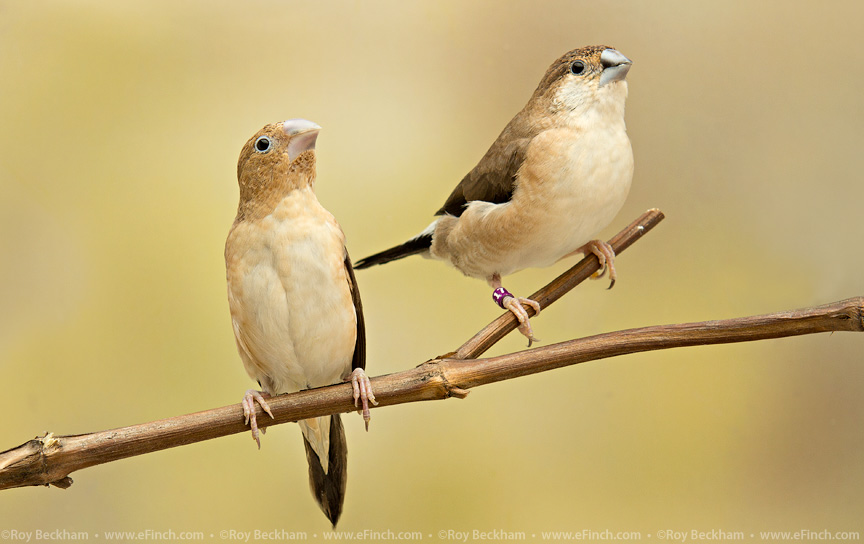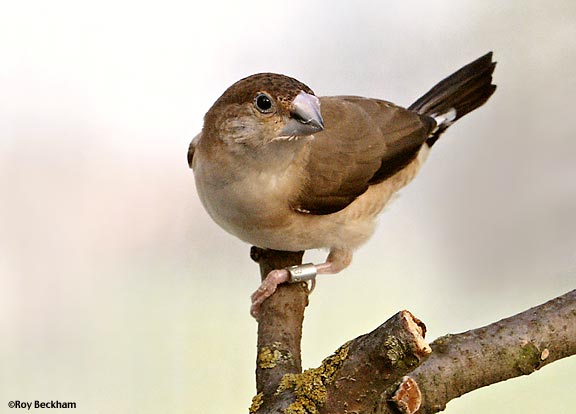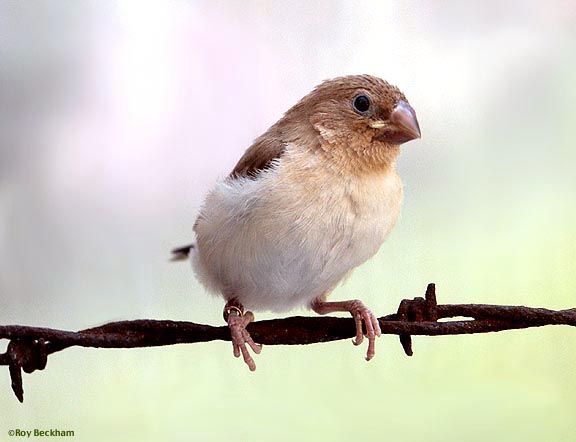




 |
|
|||||||||||||||||||||
 |
|
|
|
|
|
|
|
|
|
|||||||||||||
|
|
|
|
|
|
||||||||||||||||||
|
|
|
|
|
|
|
|
|
|
||||||||||||||
|
|
|
|
|
|
||||||||||||||||||
|
|
|
|
|
|
|
|
|
|
||||||||||||||
|
|
|
|
|
|
||||||||||||||||||
|
|
|
|
|
|
|
 |
|
|||||||||||||||
 |
 |
|
||||||||||||||||||||
|
|
|
|
||||||||||||||||||||
|
|
|
|
|
|
|
|
|
|
|
|
|
|
|
|
|
|
|
|
|
|
|
|
| African Silverbill - Lonchura cantans | |||||
 |
|||||
| African Silverbill (left) Indian Silverbill (right) | |||||
|
Common Names Description Diet Breeder's Notes I provided them with a standard half-open nest box and gave them plenty of cocnut fiber for nesting material. Typical of mannikins, they wove a nice ball nest with a narrow entrance directed to one side or the other of the opening in the box. Clutches ranged from 4-6 eggs and incubation was shared by both sexes, often with both in the box. Incubation is approximately 13 days. The young are dark and do not have much fuzz on them at all. Their begging pattern is similar to Cutthroats and Redheads in that they have a very large gape and stretch their heads straight up. They may change this as they age to the more typical estrildid pattern of turning the head and bending down low, but I only observed them at the young age. Begging outside the nest was typical of estrildids. The young fledge at about 20 days and are independent after approximately 2 weeks, but it's always better to be cautious and not remove them before 3 weeks. The usually will return to the nest at night with the parents during this time and there usually is no problem with keeping the young with the adults. The only reason to usually remove the young is so that the parents can get back to raising the next clutch. |

African Silverbill

Indian Silverbill
|
Additional Notes There are a number of mutations overseas, but none of them have arrived in the U.S. due to the import restrictions of this species listing on CITES appendex III. Some of these mutations include a Chocolate, Ino and Cinnamon (probably more appropriately a Fawn). These "mutations" may be the result of hybridization with Society finches and then back crossed to the Silverbills. Silverbills have hybridized with a number of different species including many different members of Lonchura and others including the Zebra finch. Hybrids between the other Lonchura are possibly fertile. Hybrids with the Indian Silverbill are known to be fertile. Look for a pinkish rump area on these hybrids to determine parentage. |

Immature African Silverbill. See the mouth markings of nestling Silverbills (click to view)
